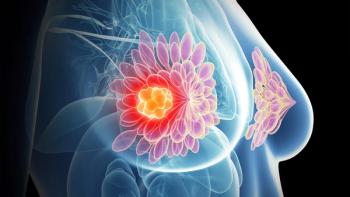
- February 2018
- Volume 12
- Issue 1
Cryotherapy Eases Chemotherapy-Induced Peripheral Neuropathy
Cryotherapy delivered through frozen gloves and socks during paclitaxel (Taxol) infusion dramatically reduced objective and subjective symptoms of chemotherapy-induced peripheral neuropathy (CIPN) in a small study of patients with breast cancer.
Cryotherapy delivered through frozen gloves and socks during paclitaxel (Taxol) infusion dramatically reduced objective and subjective symptoms of chemotherapy-induced peripheral neuropathy (CIPN) in a small study of patients with breast cancer.
Investigators at Kyoto Hospital in Japan explored the use of therapeutic regional hypothermia by outfitting patients receiving weekly paclitaxel (80 mg/ m2 for 1 hour) with frozen gloves and socks on their dominant side for 90 minutes. Symptoms of CIPN were assessed from baseline using the nondominant side of the patient as the control arm of the study.
The investigators measured the participants' sensitivity to touch, temperature, and vibration, as well as their dexterity before the study started and again after the 12-week chemotherapy regimen.
Of the 40 participants, 36 received the required cumulative dose of 960 mg/m2 of paclitaxel and were evaluable for symptoms. The incidence of tactile sensitivity, the primary endpoint of the study, was significantly lower on the intervention side versus the control side. The tactile sensitivity rate for the hand was 27.8% on the intervention side versus 80.6% for the control side (odds ratio, 20.00); for the foot, those rates were 25.0% and 63.9%, respectively.
Investigators also found that cryotherapy reduced the incidence of thermosensory dysfunction for warm sensations and resulted in lower rates of manipulative dexterity deficits. Patient-reported outcomes for subjective symptoms also improved in the intervention group versus the control group. No patients dropped out due to cold intolerance, the authors said.
The most frequently reported adverse effects were pain (8.2%), sensory abnormalities (0.4%), and feeling cold (4.2%). These effects did not linger after therapy ended. The investigators noted that their study had “severe limitations,” including the placebo effect of patient expectations for the intervention and control sides, as well as the plan not to follow patients after therapy because of the potential confounding impact of any further treatments.
Nevertheless, they concluded that cryotherapy is a “simple, safe, and effective strategy” for preventing CIPN, improving the likelihood that patients will not reduce or delay treatment due to CIPN.
REFERENCE
Hanai A, Ishiguro H, Sozu T, et al. Effects of cryotherapy on objective and subjective symptoms of paclitaxel-induced neuropathy: prospective self-controlled trial [published online October 12, 2017]. J Natl Cancer Inst. doi: 10.1093/jnci/ djx178.
Articles in this issue
almost 8 years ago
Every Second Countsalmost 8 years ago
An Intimate Conversation: Cancer and Sexual Healthalmost 8 years ago
Drug and Minibag Shortages: How We Got Here and What We Can Doalmost 8 years ago
Do You Have a Hula Hoop?almost 8 years ago
Giving Gifts to Patients: Acceptable or Unacceptable?almost 8 years ago
High-Touch Wipe Down: Decreasing C. diff Rates in Adults With Canceralmost 8 years ago
Reducing the Burden of CancerNewsletter
Knowledge is power. Don’t miss the most recent breakthroughs in cancer care.














































































